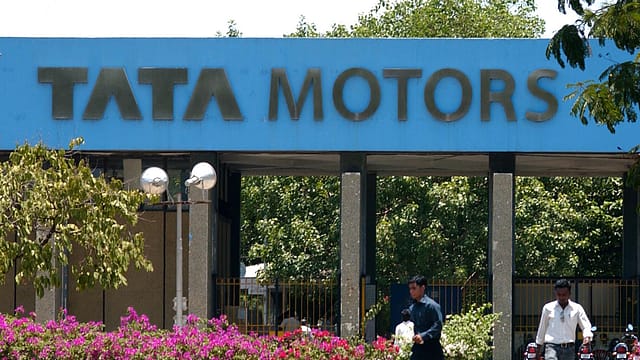Tata Motors posts ₹2,958 cr Q3 profit
ADVERTISEMENT

Tata Motors Ltd clocked a net profit of ₹2,957.71 crore for the quarter ended December 31, 2022, as against a loss of ₹1,516.14 crore in the corresponding period of last fiscal.
Revenue from operations stood at ₹88,488.59 crore during the third quarter, up 22.5% year-on-year compared with ₹72,229.29 crore in the same quarter last fiscal, according to its stock exchange filing.
Revenue from Jaguar Land Rover (JLR) came in at £6 billion, up 28% year on year and up 15%, sequentially reflecting better supplies, strong model mix and pricing, the automaker says.
Tata Motors’ passenger vehicle revenue rose 37% year-on-year to around ₹11,700 crore, reflecting higher volumes and realisations. EBITDA margins were 6.9% (up 370 bps) and EBIT margins were at 1.5% (up 510 bps), driven by improved volumes and mix, higher realisations, softening commodities and certain one offs, the filing says.
Passenger vehicle wholesales grew 33% year-on-year, driven by strong demand for Nexon, Nexon EV, Punch, Tiago and Tigor CNG, says the carmaker. The company has commenced deliveries of Tiago.ev in January 2023.
“Wholesales of 131,297 units recorded in Q3 FY23 resulted in the business comfortably crossing the distinctive landmark of 500,000 annual units to post wholesale of 526,798 units in CY22. EVs too posted their highest ever sales in Q3 FY23 at 12,596 units (+ 116.2% vs Q3 FY22) and crossed the cumulative sales milestone of 50,000 units. Going forward, we remain vigilant about the evolving demand and supply situation and will stay nimble to take necessary actions swiftly whilst focusing on improving profitability further,” says Shailesh Chandra, Managing Director Tata Motors Passenger Vehicles Ltd & Tata Passenger Electric Mobility Limited.
January 2026
Netflix, which has been in India for a decade, has successfully struck a balance between high-class premium content and pricing that attracts a range of customers. Find out how the U.S. streaming giant evolved in India, plus an exclusive interview with CEO Ted Sarandos. Also read about the Best Investments for 2026, and how rising growth and easing inflation will come in handy for finance minister Nirmala Sitharaman as she prepares Budget 2026.
“We remain cautiously optimistic on the demand situation despite global uncertainties. We will remain vigilant on demand and our continued focus on profitable growth, improving semiconductor supplies and stable commodity prices will aid revenue growth, margin improvement and positive cash delivery in Q4 FY23,” the automaker says.
JLR delivered on its plans and achieved positive free cash flow and profitability in the quarter as supplies improved, the company says. “The higher profitability reflects increased wholesale volumes with favourable mix, pricing and foreign exchange offset partially by higher inflation and supplier claims largely related to constrained volumes,” it adds.
Wholesales in China during the quarter were impacted by lockdowns leading to dealer closures followed by high rates of staff absence as Covid-19 restrictions were relaxed. “The situation is expected to recover in the fourth quarter with our dealers open and staff absence closer to normal levels in January,” the company says.
“JLR has returned to profit as chip shortages eased in the quarter and production and wholesales increased. These improved results are testament to the hard work and dedication of our people across the business who have delivered a further increase in production of our New Range Rover and Range Rover Sport models,” says Adrian Mardell, Jaguar Land Rover’s interim chief executive officer.
On commercial vehicles, Tata Motors says the CV industry is poised for growth on the back of increased infrastructure activity, demand for last mile mobility and strong recovery in bus segment. “Going forward, we expect a good replacement demand, especially in MHCVs in Q4 FY23, as we also maintain a close watch on the evolving geopolitical situation, inflation and interest rate risks on both the supply and demand,” it says.
Revenue of Tata Motors’ commercial vehicle arm, Tata Commercial Vehicles, jumped 22% to ₹16,900 crore.
